Anyone can slap a supercharger on a stock 505-horse LS7 and pick up an extra 200 horsepower. And thanks to the incredible untapped potential of GM’s factory LS7 cylinder heads, gaining huge chunks of horsepower through natural aspiration is fairly easy, too. All it takes is some head work, long-tube headers, and a big hydraulic roller cam.
However, things get a bit more challenging in racing classes which place strict limitations on engine modifications — like NHRA Stock Eliminator. In these highly competitive classes, scratching and clawing for that last percentile of horsepower separates the apex predators from the bottom-feeding rodents.
That’s precisely what the School of Automotive Machinists & Technology did to fortify its COPO LS7 for Stock Eliminator competition.
SAM Tech used a bunch of little engine-building tricks — like minimizing ring drag, stabilizing the valvetrain, maximizing cylinder wall integrity, and experimenting with countless valve jobs — to pump up the power. The resulting numbers are absolutely astonishing: 825 horsepower and 8,300 rpm with a hydraulic roller camshaft, factory GM cylinder head castings, and a production LS7 aluminum block. That’s nearly two horsepower per cubic inch — and 320 horsepower more than stock — despite utilizing basic hardware that’s not much different from what’s found in a stock C6 Z06.
“Getting the first 90 percent of an engine’s horsepower potential is easy, the next five percent is hard, and the last five percent is (the hardest),” said SAM Tech Director of Education Judson Massingill.
Put another way, while the bulk of the hot rodding world is perfectly content settling for the first 90 percent, only the smartest guys in the room can find the next five percent. The quest to find the last five percent, however, goes down in top secret assembly rooms that exist entirely off the grid. Although no Pro Stock or Sprint Cup team in its right mind would reveal trade secrets of this caliber, as an educational institution, SAM Tech was more than happy to divulge what it takes to build a race-winning Stock Eliminator LS7. Cutting-edge projects like these serve as the perfect testbed for students and instructors to apply lessons learned in the classroom to real-world race engines.
Stock vs. COPO
Straight from GM, the COPO LS7 is no ordinary LS7. Although GM’s official horsepower rating of 425 is supposed to make people feel all nostalgic, the figure is completely bogus.
“The 427 big-block in the original ’69 COPO Camaro was rated at 425 horsepower. That rating was legit, and after blueprinting the motor and bumping up the compression ratio, they made 575-600 horsepower,” Massingill said. “Today it’s different. GM just dreams these horsepower numbers up. The COPO LS7 is rated at the same 425 horsepower as the original ’69 COPO Camaro, but it actually makes 730-740 horsepower straight from GM.”
Even after accounting for the differences in SAE and STP (standard temperature and pressure) correction factors, the horsepower gap between the COPO LS7 and a stock LS7 are immense. The COPO’s long-tube headers and Holley Hi-Ram intake manifold are obvious upgrades from stock, but diving beneath the valve covers and oil pan reveal more significant changes. Although the COPO motor shares the same block, bore diameter, and stroke dimensions as a production LS7, its rotating assembly is completely different. It features a Callies Compstar steel crankshaft, and forged 6.100-inch rods matched with Mahle 13.0:1 pistons. In addition to increasing the compression ratio more than two full points over stock, the pistons boast a Grafal anti-friction coating and low-tension rings.
The COPO’s camshaft is a completely different animal as well, with 233/276 degrees of duration at .050 and .630/.630-inch lift. This is quite a bit larger than the 211/230 at.050 cam (.591/.591-inch lift) found in the stock LS7. The 43-degree duration split on the COPO may seem radical, but when matched with CTS-VR hydraulic lifters, PSI beehive valve springs, titanium intake valves, and a COPO-specific CNC program that squeezes a smidgen more airflow out of the LS7 cylinder heads, the combination turns 8,000 rpm out of the box. Consequently, the challenge of building a competitive Stock Eliminator LS7 isn’t merely improving upon a stock 505-horsepower LS7. The daunting mission at hand is improving upon a highly optimized COPO LS7 that’s already producing 200-plus horsepower more than stock.
Valve Work
Porting cylinder heads is difficult enough as it is, but throwing a rulebook into the mix is like trying to design a set of ports with one arm handcuffed to a workbench. Fortunately, sanctioning bodies are sometimes forced to revise rules that are difficult to police.
“Racers have figured out how to hide port work, so the NHRA has given up on trying to enforce that rule. Instead, they’ve come up with a maximum allowable volume for the ports, and a minimum volume for the combustion chambers,” Massingill said.
Given these restrictions, improving airflow is much more difficult, but not impossible.
“There’s a lot of airflow potential in the valve job. We can’t run larger valves, so we move the seat out to the far edges of the valve, which effectively makes the valve perform as if it’s bigger,” Massingill said. “From there, we try different cuts on the seat where it transitions from the edge of the valve into the combustion chamber. Then we try different back cuts on the valves to see what works best. We ruin quite a few valve seats to get the angles and cuts just right, and what we end up with is very different than what comes from GM.”
Straight from the factory, the COPO LS7 head castings flow an impressive 375 cfm. Despite having to work within an NHRA-specified maximum port volume, SAM somehow increased airflow to 390 cfm.
“The maximum intake port volume we’re allowed is 275cc, so we milled down the intake flange surface to shorten up the length of the port just slightly. This gives us some extra room to touch up the short-turn radius, bowl, and valve job area and increase the cross-section a bit without exceeding the cc limit,” Massingill said.
Valvetrain Stability
In the not-so-distant past, turning 8,000 rpm was the exclusive territory of solid-roller race engines. Not only has GM managed to significantly increase the maximum engine speed of the COPO LS7’s hydraulic roller valvetrain, it gets the job done with parts that look deceivingly ordinary. GM fits the heads with stock LS7 titanium intake valves, sodium-filled exhaust valves, PSI beehive valve springs, and lightweight steel retainers. Managing valve actuation duties is a 233/276 at .050 cam, 3/8-inch pushrods, stock 1.8:1 LS7 rocker arms, and lightweight ceramic ball lifters originally designed for GM’s CTS-V racing program.
To wring some more rpm out of the COPO LS7, SAM Tech spec’d out a custom camshaft to take advantage of their improved cylinder head design, and also focused on stabilizing the valvetrain. After testing several different grinds, SAM Tech opted for a custom Comp 258/276 at .050 cam. The additional 25 degrees of intake duration helps build cylinder pressure higher in the rpm range, and the wide 116-degree lobe-separation angle further extends the powerband at high rpm. Since the NHRA limits maximum valve lift to .641-inch, as no surprise, the cam picks the valves up exactly .641-inch.
Although the excellent factory GM valvetrain is a tough act to follow, SAM Tech recognized some areas for improvement.
“The CTS-VR lifters are some of the most incredible lifters I have ever seen, but GM sets the plunger travel in the middle like a street car. For our COPO motor, we took a set of factory LS7 lifters and shimmed them up so they only have .012-inch of plunger travel,” Massingill said. “That enables them to function more like a solid roller lifter. They probably don’t make too much of a difference at 7,800 rpm, but they’re definitely an improvement above 8,000 rpm. The stock LS7 rocker arms are incredibly lightweight and rigid, but because of how we modified the lifters, we needed a set of adjustable rockers. To account for the change in plunger travel and to cut down on flex, we installed a set of steel T&D rockers.”
According to Massingill, reducing mass on the “valve side” of the valvetrain is far more important than reducing mass on the “pushrod side” of the valvetrain. “The NHRA doesn’t allow running a smaller valve stem diameter. There’s nothing out there that’s lighter than the factory valves, so there was no need to replace them,” he said. “The rules are unrestricted on the valvesprings and retainers as long as they fit in the factory spring pocket. We installed a set of PAC springs and upgraded to titanium retainers and locks. Every gram of weight you can save on the retainers and locks makes a big difference in valvetrain control and durability.”
Maximizing Cylinder Pressure
If increasing cylinder pressure is the key maximizing torque, then converting that torque into as much horsepower as possible involves preventing cylinder pressure from falling off at high rpm. With the countless hours and dollars which go into optimizing the induction package and valve events to achieve those key objectives, preserving cylinder pressure is just as important as creating it.
“You can’t have any blow-by going into the crankcase,” Massingill said. “Any cylinder pressure that’s getting past the rings is pressure that isn’t pushing down on the pistons. Ring seal is critical, and the cylinders must stay round.”
With a 4.400-inch bore spacing and 4.125-inch diameter bores, cylinder wall thickness is already at a premium in a stock LS7. Since NHRA rules allow for up to a .070-inch overbore, racers are bound to push the limit even further to pick up some additional displacement and give the valves some extra breathing room. To reduce cylinder distortion while also enjoying the benefits of a larger 4.185-inch bore, SAM Tech shipped the block off to ERL Performance to replace the factory gray iron liners for a set of Darton dry sleeves.
“The ductile iron Darton uses is the same material used in Funny Cars and Top Fuel cars, so they’re not going to move around at all. We also tied all the main caps together with a girdle to stiffen the block up some more,” Massingill said.
Friction Control
As engine rpm and piston speed increase, parasitic power loss skyrockets. Even in stock trim, the LS7’s relatively long 4.000-inch stroke yields a brisk piston speed of 4,666 feet per minute at 7,000 rpm. Simply raising peak rpm to 8,300 rpm increases piston speed to 5,533 feet per minute. That means that each piston in SAM Tech’s COPO LS7 is dragging its rings up and down the bore an additional 14.45 feet per second compared to stock, which equates to a whole lot of friction. The obvious solution is applying a deep plateau hone to the cylinder walls to strike an optimal balance between oil retention and a slick surface finish.
“On a high-end racing engine, the right cylinder hone and ring package can make a 25-35 horsepower difference,” Massingill said.
While a slick cylinder wall finish is rather ordinary by race engine standards, the other friction-reducing tricks SAM Tech’s LS7 has up its sleeves are anything but. The NHRA rulebook strictly regulates piston design by prohibiting gas ports and specifying a minimum ring groove width. As a clever workaround, SAM Tech replaced the COPO LS7’s standard .043-inch top and second rings with thinner .027-inch Total Seal units. The reduced surface area offered by the thinner rings cut down on friction and provide superior conformability to improve cylinder seal.
Nevertheless, thinner rings are more prone to flutter, which would usually be a bad thing if it wasn’t for Total Seal’s ingenious solution. By matching the thin rings up with gas-slotted ring spacers, the result is additional ring support and further enhanced ring seal.
“The horizontal slots in the spacers work like gas ports. They route cylinder pressure behind the rings to force the ring face into the cylinder wall,” Massingill said. “This means you can run lower-tension rings, reduce friction, and still have great ring seal. As cylinder pressure decreases in the later stages of the power stroke, the slots allow the pressure behind the rings to bleed off quickly, reducing ring drag.”
Since pistons aren’t the only components in the rotating assembly subject to frictional power loss, SAM Tech devoted equal attention to the crank and rods as well. The spec crankshafts and rods mandated by the NHRA effectively ban the use of smaller-diameter Honda rod journals as a means of reducing bearing friction. SAM Tech had to get more creative by narrowing the Number 1 and 5 main bearings .055-inch and the rod bearing .062-inch.
“Due to crank flex, the bearing load on the Number 2 and 4 main bearings are much higher than on the Numbers 1, 3, and 5. A crankshaft with center counterweights can help even out the loads, but the spec crank we have to run doesn’t have them so we stuck with standard-width bearings on the Number 2 and 4 mains,” Massingill said.
Crankcase Mods
When the task at hand involves accelerating the crankshaft with as much ferocity as possible, anything that enables the crankshaft to rotate more freely can potentially reduce parasitic power loss. Although the LS7 block’s deep-skirt design provides excellent support of the main caps, the downside is that it isolates the crankcase into four separate sections. Consequently, crankcase pressure can create resistance against the piston as it travels down the bore. A vacuum pump offers an easy solution, but they’re banned by the NHRA on the COPO LS7.
Recognizing this problem, GM enlarged the breathing windows on the LS7 main caps to improve bay-to-bay ventilation. SAM Tech took things a few steps further by radiusing the breathing windows and polishing out the crankcase to a smooth finish by removing casting flash.
“The enlarged breathing windows allows air that gets pushed down by the pistons to escape, preventing it from getting trapped in one compartment,” Massingill said. “Polishing the crankcase reduces the risk of stress cracks, and it also helps the oil drain back into the pan more easily.”
As with crankcase pressure, oil windage is yet another obstacle standing in the way of free and easy crankshaft rotation. In order to better manage the COPO LS7’s windage, SAM Tech relies on a few tried-and-true techniques. Unlike factory LS7s, the COPO LS7 do not benefit from a dry sump oil system. To prevent the counterweights from whipping through the oil, SAM Tech opted for a Stef’s deep sump seven-quart oil pan. Likewise, bushed lifter bores restrict oil flow to the top end, preventing excessive volumes of oil from dripping back down onto the crankshaft.
“These motors come with a truck oil pan that works very well,” Massingill said. “The Stef’s pan does an even better job of keeping the oil off the crank, which is probably good for 10-12 horsepower.”
Check out the slides below to get an up-close look at SAM Tech’s Stock Eliminator LS7 and scroll down for the dyno numbers.
On the Dyno
RPM TQ HP
6,300 649 779
6,400 643 784
6,500 637 788
6,600 631 793
6,700 625 797
6,800 620 802
6,900 615 807
7,000 609 812
7,100 604 816
7,200 597 819
7,300 591 821
7,400 586 825
7,500 575 821
7,600 564 816
7,700 554 812
7,800 545 809
7,900 534 803
8,000 522 795

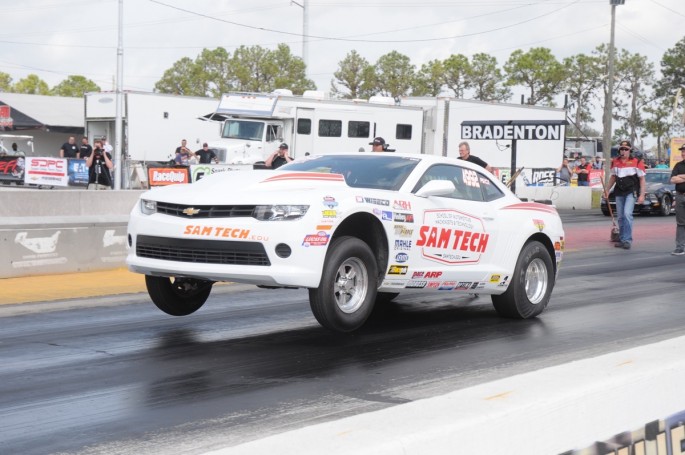
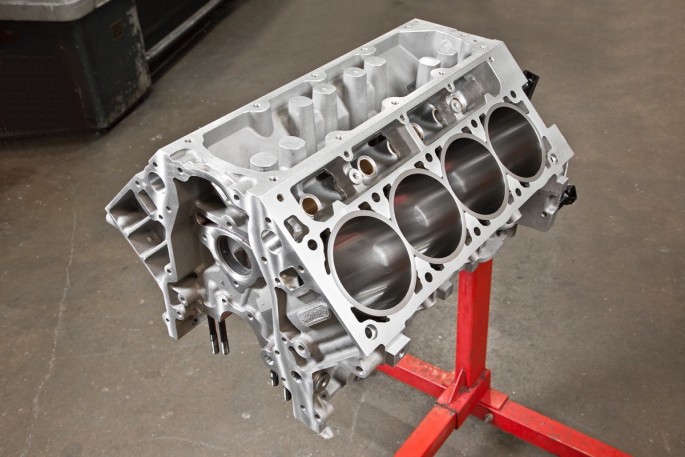

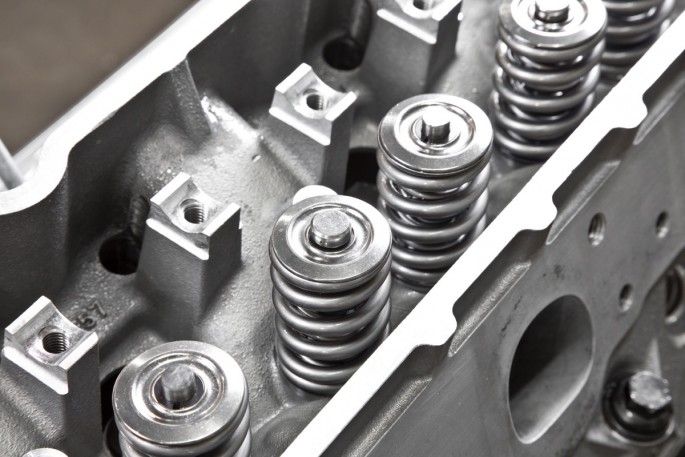
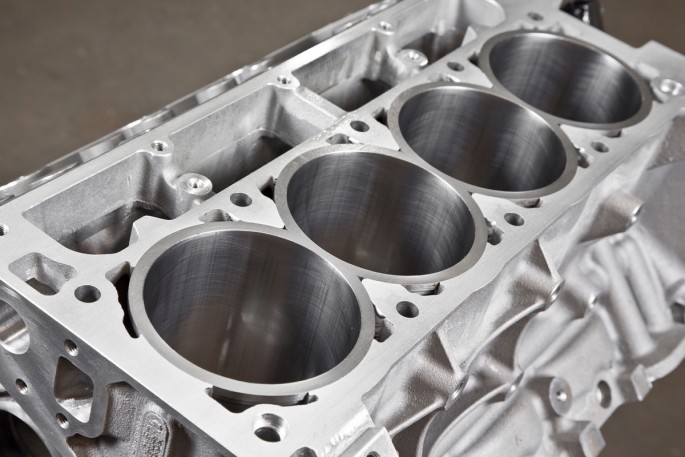
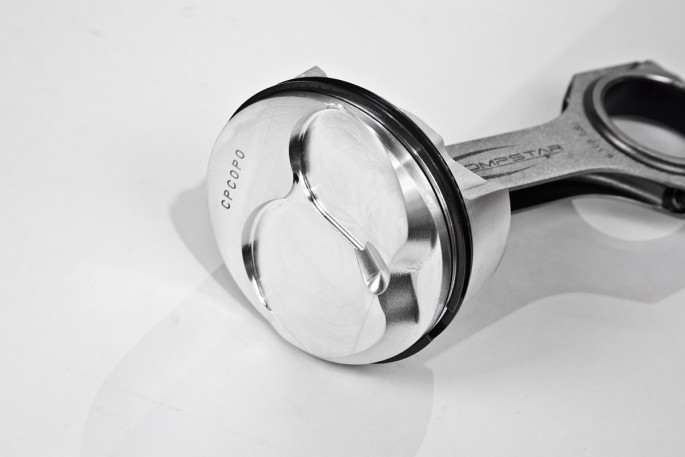
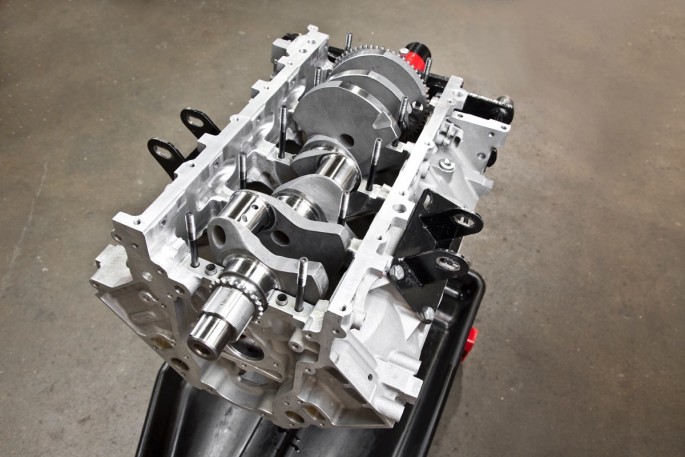
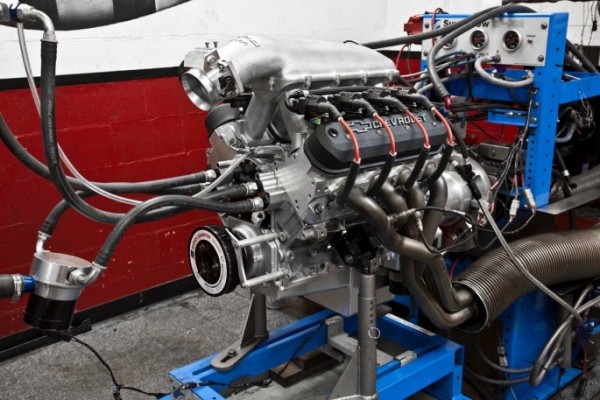
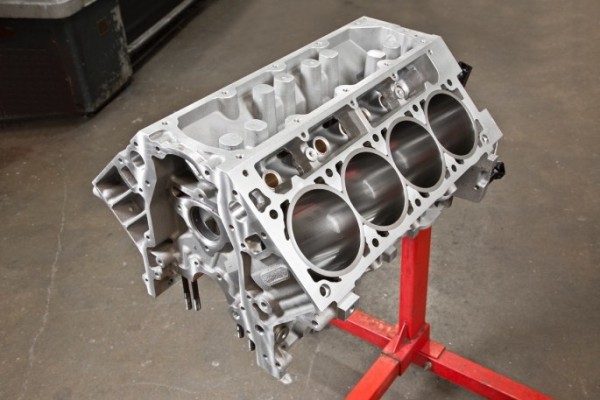























Can you say anything other than “WOW!!!!” I never got that with the L-88 2nd design engine I was using. Max was 625 h.p. with custom intake and much bigger cam; though it went for a bit longer at close to peak power, this shows how much the development has grown since those days. I can just get rich and go by a car that makes 740+ power as I put it on the trailer!!!!
Now for those get rich plans….. where did I put them????